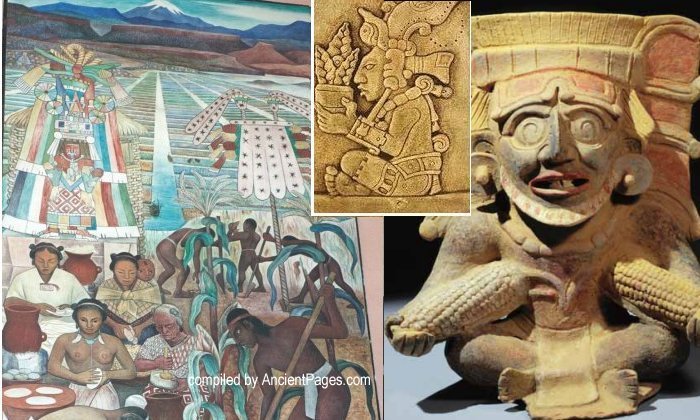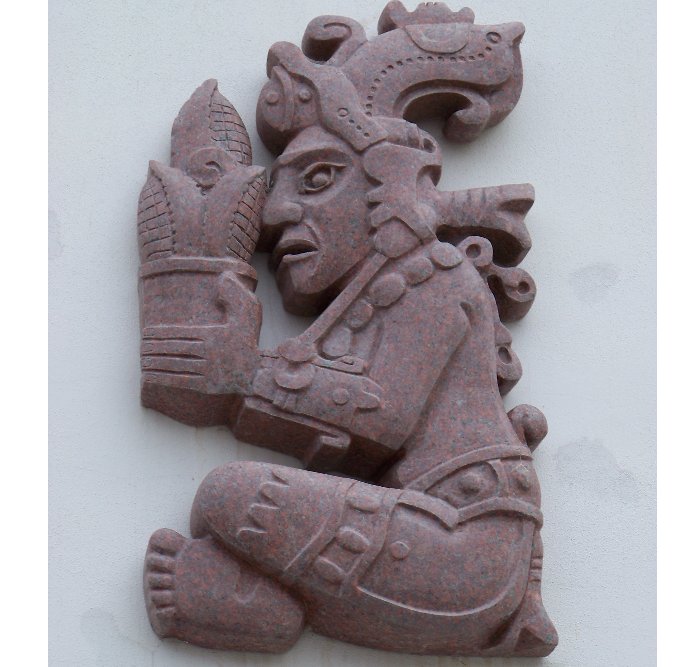Yum Kaax, Mayan God Of Agriculture, Lord Of Woods And Caretaker Of Animals
A. Sutherland - AncientPages.com - The pantheon of early South and Mesoamerican gods included many deities to whom people regularly made offerings.
One of them was Yum Kaax (also known as Ah Mun, Yum K'aax, or Yum Uil), often portrayed with the most sacred food of the Maya people - corn. His name originates from the Maya words 'Yum' ("lord") and 'Kaax' ("forest") or "the wild."
Therefore, this great deity is, first of all, Lord of the Forest and guardian of all wildlife.
The ancient Maya regarded Yum Kaax as a benevolent agricultural god symbolizing abundant life and prosperity. During the Classical period, he was identified as a priest watering corn grains over Mother Earth's head.
Among his most respected titles were "lord of the forest land" (or "lord of the forest") and "Lord of the harvest." In many Mayan beliefs, he was the god of corn and agriculture, the ruler of the jungle and nature.
Yum Kaax whose counterpart in the Totonac culture was Centeotl, was known to have a passive nature, making him helpless and frequently attacked by birds, insects, and troublesome rodents. He depended on Chac, the god of life-giving rain, and on humans, who represented Yum Kaax's greatest and most trusted ally.
The Maya people in ancient times believed that by their rituals, they could attract the rain needed for grains and leaves, free them of weeds, and drive away or at least discourage pests that harmed them.
Relief image of Yum Kaax in front of the entrance to the Botanical Garden of Teplice, Czech Republic. Source
Yum Kaax was a grateful deity showing his gratitude for good people by providing life for them through his food. It was his way of showing that he could give much in return for all this care.
The One Who Punished Bad Hunters
As the patron of the cultivation, Yum Kaax was involved in a variety of agricultural works. He protected animals and plants for human use and nourishment and helped those who hunted for their food.
Yum-Kaash was honored and loved, and the hunters respected this young god. He could either lead them to good hunting or punish them by turning the arrow back if proper respect was not given to an animal. Therefore, they had to direct special prayers and perform certain rituals, asking for Yum Kaax's permission and guidance, particularly during the hunting of deer.
An old legend says that if a hunter gets deep into the forest without asking the deity for permission, he may be in danger of being harmed or lost. Sometimes, he can return home safely but may experience particular food, water, or possessions losses. The hunters in old times believed that Yum Kaax protected the forests, cared for wild animals, and punished evildoers who harmed them.
Also, farmers invoked him before clearing the land for cultivation and wanted to receive his benefits and indispensable help in case of need.
In ancient Mayan society, keeping a good relationship with their gods was vital, so it was not strange that sometimes human sacrifices were made to please the deities.
In the pantheon, Yum Kaax—a symbol of youth and strength—was among the youngest Mayan gods. Among the Mayans of Yucatan, he was often considered the son of Itzamna and Ixchel, the rainbow goddess.
One of Yum Kaax's physical representations was a young man wearing a headdress in the form of corn and holding a corn cob with both hands. Another time, as the Lord of Woods, he has a vase with three ears of corn. Therefore, he was often mistaken for a god of corn.
The Mayans kept their belief that this young god kept their crops healthy, preventing them from starving to death. When the field withered up, Yum-Kaax perished, and when it turned green again, the deity resurrected. It frequently happened that the deceased Maya ruler in the afterlife was depicted as the young god of maize. The Mayans believed that the gods from cornmeal created them.
As the Lord of the Harvest, Yum Kaax symbolized the resurrection and rebirth of life. He represented the cyclical nature of all life on our planet.
Written by – A. Sutherland - AncientPages.com Senior Staff Writer
Updated on March 30, 2024
Copyright © AncientPages.com All rights reserved. This material may not be published, broadcast, rewritten or redistributed in whole or part without the express written permission of AncientPages.com
More From Ancient Pages
-
 Ancient Burial Tomb Of A Noble Mongol Warrior With Weapons Unearthed In The Moldavian Village
Archaeology | Aug 9, 2022
Ancient Burial Tomb Of A Noble Mongol Warrior With Weapons Unearthed In The Moldavian Village
Archaeology | Aug 9, 2022 -
 Unique 4,000-Year-Old Board Game – Unearthed In Oman
Archaeology | Jan 18, 2022
Unique 4,000-Year-Old Board Game – Unearthed In Oman
Archaeology | Jan 18, 2022 -
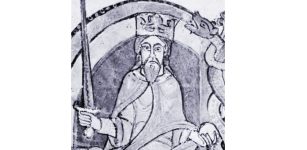 On This Day In History: David I Becomes King Of Scots – On Apr 27, 1124
News | Apr 27, 2016
On This Day In History: David I Becomes King Of Scots – On Apr 27, 1124
News | Apr 27, 2016 -
 850,000-Year-Old Remains Of Homo Antecessor Found At Atapuerca, Spain
Archaeology | Jul 30, 2024
850,000-Year-Old Remains Of Homo Antecessor Found At Atapuerca, Spain
Archaeology | Jul 30, 2024 -
 Hidden Tunnel In Tokat Castle – ‘The Dungeon Of Dracula’ – To Open Soon
News | Sep 22, 2015
Hidden Tunnel In Tokat Castle – ‘The Dungeon Of Dracula’ – To Open Soon
News | Sep 22, 2015 -
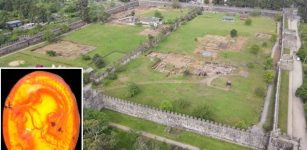 Roman Fort Of Apsaros Reveal Some Of Its Archaeological Secrets
Archaeology | Nov 7, 2023
Roman Fort Of Apsaros Reveal Some Of Its Archaeological Secrets
Archaeology | Nov 7, 2023 -
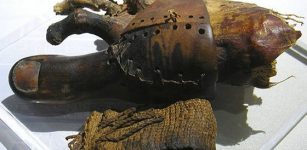 3,000-Year-Old Egyptian Artificial Wooden Toe In New Light
Archaeology | Jun 20, 2017
3,000-Year-Old Egyptian Artificial Wooden Toe In New Light
Archaeology | Jun 20, 2017 -
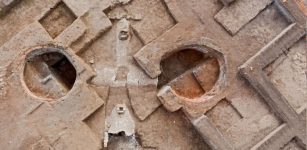 2,000-Year-Old Factory Producing Roman Fish Sauce Unearthed In Ashkelon, Israel
Archaeology | Jan 7, 2020
2,000-Year-Old Factory Producing Roman Fish Sauce Unearthed In Ashkelon, Israel
Archaeology | Jan 7, 2020 -
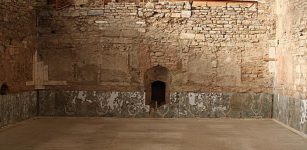 Marble Slab Production During Roman Imperial Time Was Much More Efficient Than It Is Today
Archaeology | May 14, 2021
Marble Slab Production During Roman Imperial Time Was Much More Efficient Than It Is Today
Archaeology | May 14, 2021 -
 Scottish Settler’s Ominous Encounter With A Mysterious Being In West Virginia
Featured Stories | Mar 18, 2024
Scottish Settler’s Ominous Encounter With A Mysterious Being In West Virginia
Featured Stories | Mar 18, 2024 -
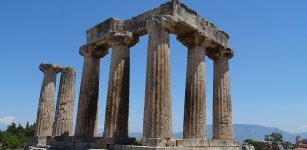 Ancient Greeks Had Knowledge Of Advanced Lifting Technology Long Before Modern Cranes Were Invented
Ancient Technology | Aug 29, 2019
Ancient Greeks Had Knowledge Of Advanced Lifting Technology Long Before Modern Cranes Were Invented
Ancient Technology | Aug 29, 2019 -
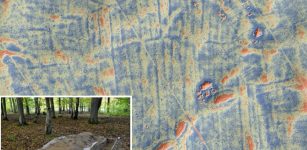 Unknown 2,000-Year-Old Settlement Hidden In The Polish Tuchola Forest Revealed By LIDAR
Archaeology | Feb 18, 2019
Unknown 2,000-Year-Old Settlement Hidden In The Polish Tuchola Forest Revealed By LIDAR
Archaeology | Feb 18, 2019 -
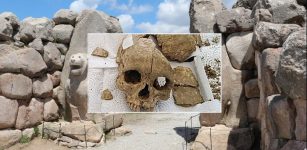 3,500-Year-Old Skull And Thighbone Discovered In Sapinuwa Antique City Of Central Anatolia
Archaeology | Dec 3, 2019
3,500-Year-Old Skull And Thighbone Discovered In Sapinuwa Antique City Of Central Anatolia
Archaeology | Dec 3, 2019 -
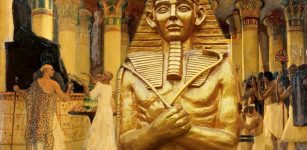 Harem Conspiracy – Plot To Murder Ramesses III, The Last Great Warrior Pharaoh
Featured Stories | Mar 24, 2018
Harem Conspiracy – Plot To Murder Ramesses III, The Last Great Warrior Pharaoh
Featured Stories | Mar 24, 2018 -
 Unexplained Phenomena Witnessed Around Mysterious Ancient Stone Structures In New York – Can A Sacred Native American Mountain Offer Clues?
Featured Stories | Nov 3, 2024
Unexplained Phenomena Witnessed Around Mysterious Ancient Stone Structures In New York – Can A Sacred Native American Mountain Offer Clues?
Featured Stories | Nov 3, 2024 -
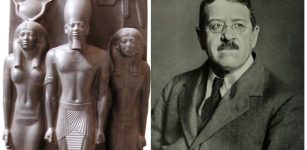 On This Day In History: American Archaeologist George A. Reisner Was Born – On Nov 5, 1867
News | Nov 5, 2016
On This Day In History: American Archaeologist George A. Reisner Was Born – On Nov 5, 1867
News | Nov 5, 2016 -
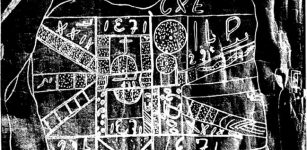 Undeciphered Ancient Stone Maps With Mysterious Signs May Hold Key To The Spider Rock Treasure
Artifacts | Apr 29, 2014
Undeciphered Ancient Stone Maps With Mysterious Signs May Hold Key To The Spider Rock Treasure
Artifacts | Apr 29, 2014 -
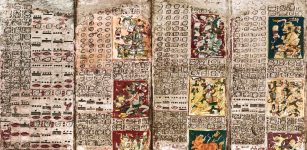 Dresden Codex – Probably The Oldest And Best Preserved Book Of The Maya
Ancient History Facts | Jun 24, 2016
Dresden Codex – Probably The Oldest And Best Preserved Book Of The Maya
Ancient History Facts | Jun 24, 2016 -
 Marquis Of Haihun’s Tombs: Dressing Mirror With Confucius’ Portrait Re-Identified
Archaeology | Mar 4, 2017
Marquis Of Haihun’s Tombs: Dressing Mirror With Confucius’ Portrait Re-Identified
Archaeology | Mar 4, 2017 -
 Mysterious Watson Brake: Old Mound Complex In North America With Earthworks Raised For Unknown Purpose
Featured Stories | Feb 21, 2018
Mysterious Watson Brake: Old Mound Complex In North America With Earthworks Raised For Unknown Purpose
Featured Stories | Feb 21, 2018

